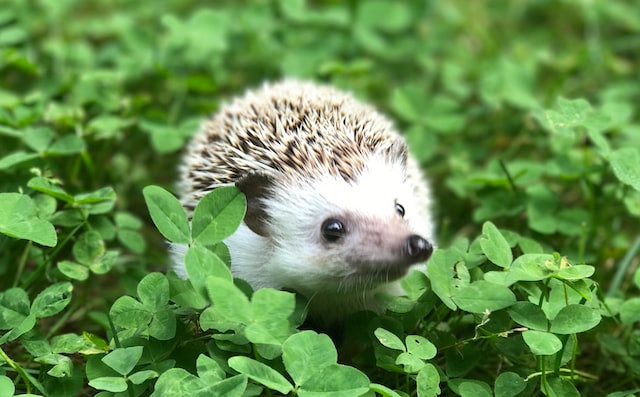Hedgehogs are nocturnal and are related to shrews through their common ancestor. They look like porcupines and echidnas, yet they’re neither.
In the course of evolution, they haven’t undergone many changes in the last 15 million years. The lack of a “huge hedgehog ancestral fossil” leads us to believe that these animals have always been on the tiny side.

How Big Does a Hedgehog Get?
Their head, tail, and legs are all attached to their torso, which consists mainly of their upper body and belly.
Hedgehogs have small, prickly spines covering practically their whole backs, including their bodies and their behinds and their heads. Spiny hairs, if you will.
Hedgehogs use their spines to protect themselves by rolling into a tight ball when they feel threatened. A hedgehog’s spines serve a dual purpose: protecting them from danger and keeping predators away.
Read Also:
- How Much do Squirrels Weigh
- Which Direction Does the Earth Rotate
- How Many Inches Does Hair Grow in a Year
When Are Hedgehogs Fully Grown?
About six months of age is when a hedgehog reaches full size. They’ve finally attained their full adult size and height. Hedgehogs reach maturity at a weight of 0.5 to 1 kg, with an average of about 780 g. On average, males are larger than females.
Hedgehogs have a captivity lifespan of up to five years after they reach maturity. Predators and other hazards in the wild reduce their longevity.
Even though their bodies cease developing at puberty, they can keep sprouting new quills for the rest of their lives. These regularly being replaced with fresh ones because they keep falling off.
How Much Do Hedgehogs Weigh?
Hedgehogs in the wild may be small, but they have the potential for high levels of activity due to their high running speed and large territory. Hedgehogs that are kept as pets are at increased risk of obesity due to a lack of space for exercise.
Hedgehogs aren’t afflicted by many ailments, but like humans, they can suffer from the effects of a sedentary lifestyle and a poor diet.
A person’s life expectancy can be significantly shortened by obesity. Hedgehogs require a running wheel or a large area to exercise in, thus most enclosures will have one of these.
You can also allow them out of their cage and into a specific room or part of your house to play each day.
Appearance & Colour
As British mammals go, hedgehogs are among the most recognisable. They have a somewhat generic body plan.
With five toes on each of their four feet, each of which is equipped with a sharp claw and many thickened pads of skin.
A hedgehog’s forefeet are around 2.5 centimetres (1 inch) long and 3 centimetres (1 inch) wide.
While its rear feet are about 3 centimetres (1 inch) long and 2 centimetres (0.79 inches) wide, and its stride is about 10 to 15 centimetres (3.94 to 5.91 inches) (4 – 6 in.).
Their small, protruding eyes are a vivid brown or black, and their snouts are fairly lengthy. Their ears are around 1 cm (just under half an inch) in height.
Internal Morphology of Hedgehogs
The skeletal structure of a hedgehog is quite similar to that of any other mammal, save for the animal’s characteristically short neck (although still consisting of seven vertebrae).
There is a fusion of the ulna and radius at the elbow, and of the tibia and fibula at the ankles. They are able to do this because their spinal column is very bendy. In addition, their tail is short and spineless, measuring about 2 centimetres (about 3/4 of an inch).
There are 36 teeth in a skull that is between 54 and 64 mm (2 and 2.5 in) in length and 32 and 39 mm ( 1.5 in) in width. The first 24 teeth are deciduous (milk) teeth and are shed within the first few weeks of life.
Read Also:
- Why Do Lizards do Push Ups
- DNS_PROBE_FINISHED_NO_INTERNET
- Can Someone See if You Screen Record Their Instagram Story
Conclusion
Spiny hedgehogs come from the Eulipotyphlan family and the Erinaceinae subfamily. The wilds of Asia, Africa, and Europe are home to seventeen distinct species of hedgehog.
Hedgehogs have been brought to New Zealand, Australia, and the Americas. Hedgehogs come in a range of sizes, from about 4 inches in length on up.
Only the three domesticated species are suitable for keeping as pets; the remaining fourteen are all wild. Domesticated hedhehogs are often smaller than their wild counterparts.





